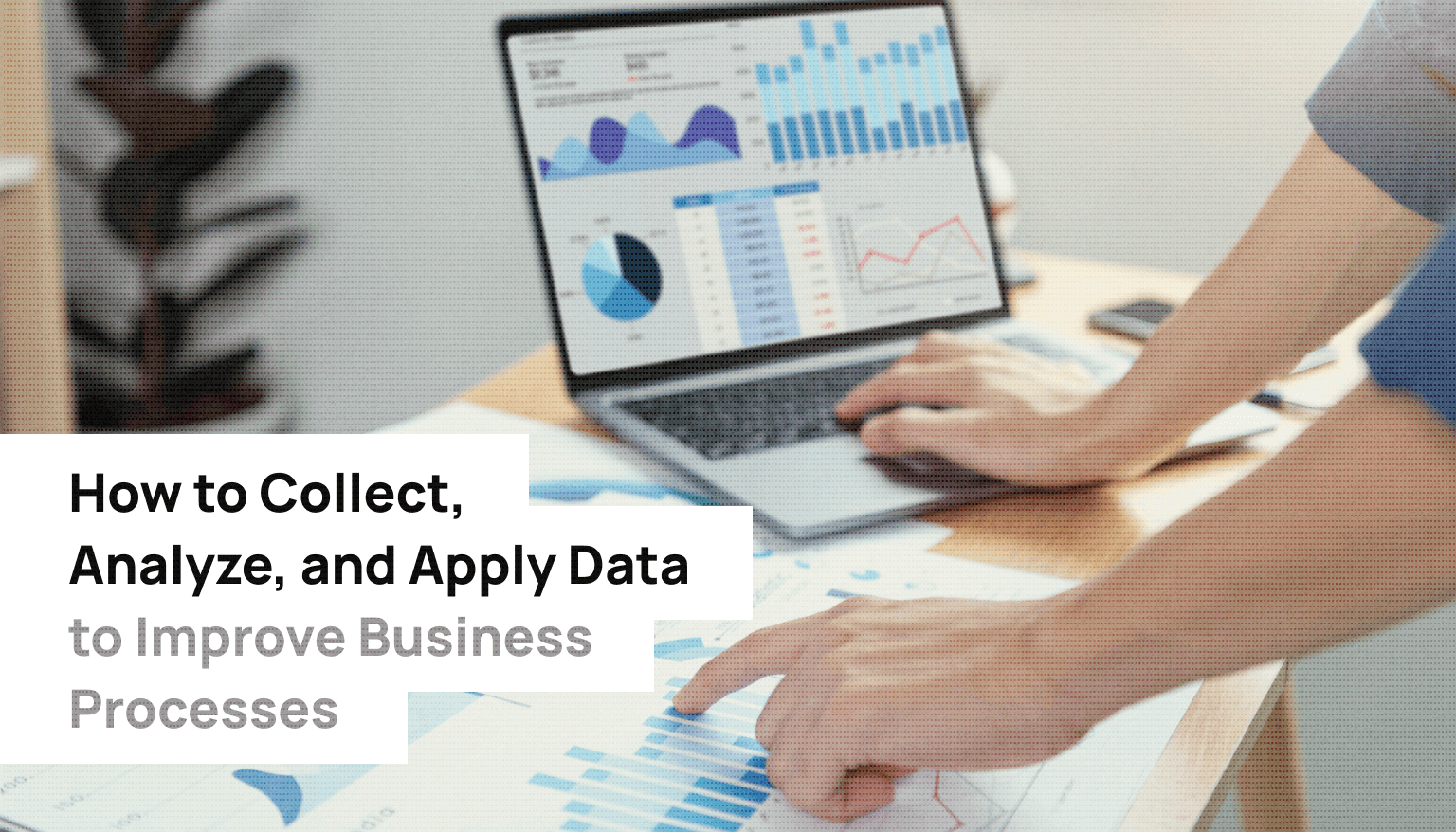How to Collect, Analyze, and Apply data to improve business processes

Data is the driving force behind any business. Moreover, data is valuable for improving business processes, risk management, increasing competitiveness, and making informed decisions. Still, the collection of data marks only the starting point in the pursuit of success. To effectively leverage data for business process optimization, companies must thoroughly think through each stage - collection, processing, and information analysis.
Within this article, we will explore the key aspects of all stages and learn how to efficiently use the outcomes for informed management decisions.
Data collection stage
Data collection is the initial step towards effective business process optimization. At this stage, you can collect a fair and detailed understanding of your current processes effectiveness.
Key metrics and indicators identification
Before you begin gathering data, it's essential to have a clear understanding of which particular metrics and indicators are most important for you. These could include, for example, task execution time, user conversion rates, website visit frequency, or other parameters that directly or indirectly impact productivity and performance.
Choosing data collection channels
The options for data collection can differ based on the nature of your business. These could be internal sources (such as databases, sales data, and marketing campaigns) or external ones, such as customer interaction results (feedback, surveys), data from social media, and more. Choosing data channels that accurately represent the actual processes is crucial.
Data collection and storage
To collect data effectively, it's a good idea to use tools that can automate this process. This will help reduce human error, avoid mistakes, and ensure continuous monitoring. Additionally, it's important to make sure that the gathered data is stored and protected properly, with the right level of security.
Data analysis stage
Data analysis lets you gain insights from the collected data and identify specific steps to optimize business processes. At this stage, you can spot trends, identify problems, forecast changes, and get informed recommendations for optimizing business processes.
Initial data processing
The data you've gathered could be inconsistent and incomplete. It's important to carry out initial data processing: deleting duplicates, filling in missing values, standardizing data, and other operations that ensure the quality and accuracy of information.
Analysis questions formulation
Create precise questions that you seek answers to. For instance, why does a certain business process take longer than anticipated, or what factors influence the demand for your products or services.
Data analysis methods and techniques application
Determine which analytical techniques are best suited for your data. This could include simple data overview, correlations between variables, forecasting, and more. Use visualizations, graphs, charts, and statistical tools to vividly present results and uncover significant patterns.
Visual elements help in illustrating data and simplifying the analysis process.
Highlighting key insights
Assess the analysis results and define what they mean for your business. Identify the key takeaways, validate hypotheses, or uncover new opportunities. These might involve opportunities for resource optimization, identifying process deficiencies, or new ideas for growth and development.
Applying insights from data
Applying insights from data is a dynamic process that requires constant attention, analysis, and refinement. It empowers companies to make informed and rational decisions, enhancing their efficiency and competitiveness in the market.
Setting priorities
Determine the business areas where the greatest positive impact from changes is possible. Set priorities for improvement based on importance and potential effect on performance. For example, this might involve reducing task completion time, improving product quality, or enhancing user interaction efficiency.
Strategies development and implementation of changes
Create a detailed action plan for improving business processes based on the gained insights. Define specific steps, allocate resources, distribute responsibilities, and initiate the implementation of new approaches.
Monitoring and performance assessment
Keep a close eye on the impact of implemented changes on business processes. Use KPIs and other metrics to measure the success of new strategies. Regularly assess effectiveness and make adjustments as necessary.
Outcomes analysis
Compare the factual results with anticipated ones. Determine if the set goals have been achieved and identify any differences, if present. Analyze the factors influencing effectiveness. Based on the results analysis, consider the potential need for further adjustments. Certain aspects might require additional optimization or new strategies to attain better outcomes.
.png)
It's important to know that collecting and analyzing data the right way helps find where things can be improved, figure out what works well, and discover new ways to grow. Using data in decision-making assists companies in achieving their goals by providing well-justified and smart ways to move forward.
If you're considering improving your company's business processes, please leave your contact details in the form. Our manager will get in touch with you, offer advice, and suggest the best solution tailored to your business needs.




















